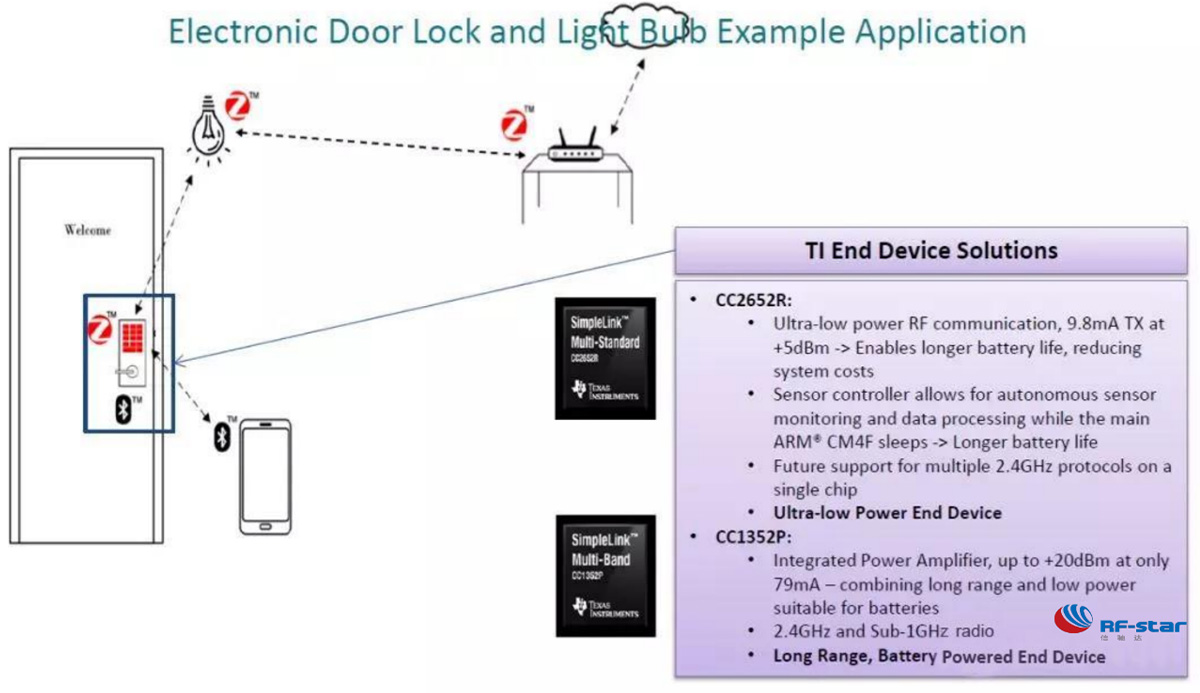At present, there are more and more options for wireless SoC chips, from the European and American manufacturers to the domestic semiconductors. How to choose a suitable wireless chip for product development? The following aspects need to be considered.
Wireless Technology:
The current popular low-power wireless technologies are including Wi-Fi, small wireless, LoRa, Bluetooth, Thread, ZigBee, NFC, Private 2.4G, NB-IoT, 2G, 3G, 4G, etc., The wireless technologies commonly used in factory automation and smart home including Wi-Fi, small wireless, BLE, Thread, ZigBee, NFC. The following figure compares the advantages and disadvantages of these different wireless protocols in data transmission bandwidth, distance and power consumption. An appropriate solution should be selected according to the usage scenario.

Wi-Fi: Wi-Fi is suitable for high-speed video data transmission, but its power consumption is relatively high. At present, there are fewer mainstream low-power Wi-Fi chips on the market. The core uses ARM M3 or M4 core, which runs simple RTOS, and only supports 802.11b/g/n mode, low bandwidth, but can meet the application of dry battery power supply.
ZigBee: The best choice of smart home, the status is being challenged by BLE MESH. But after the launch of ZigBee 3.0, various systems can be interconnected, and the compatibility of the platform is much better than before.
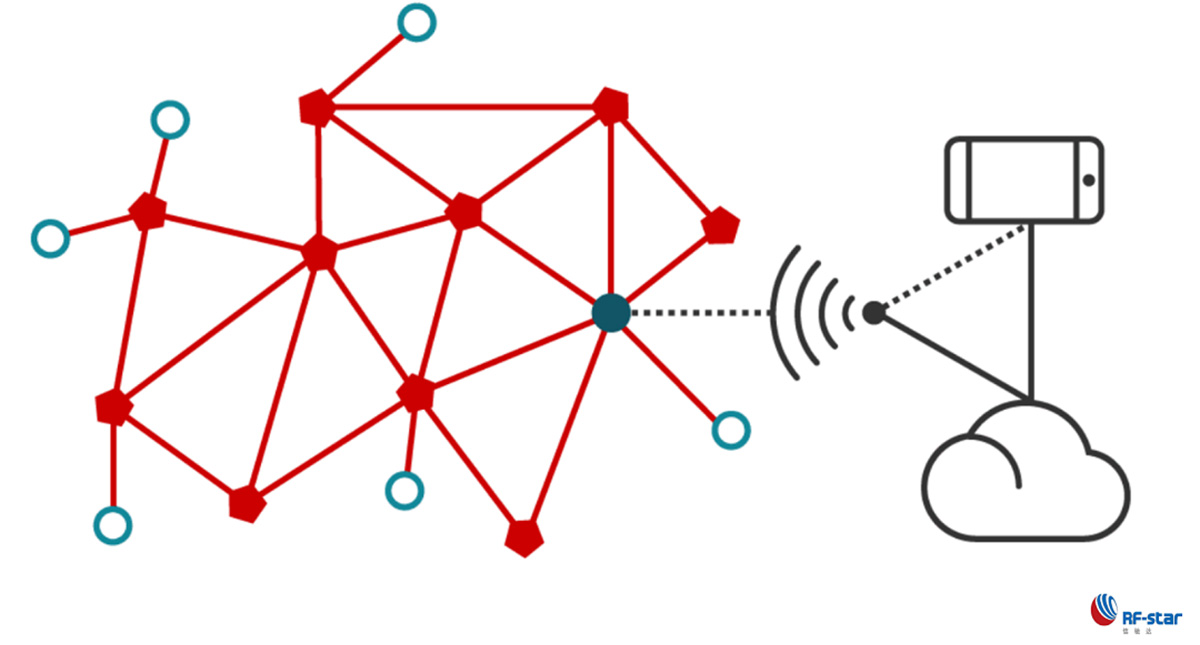
Sub-1G: Because of its stability and long transmission distance, it can be used in various industrial control fields. The TX peak current is large, but the system is in sleep mode at other times. Thus, the overall power consumption is low.
NFC: The function is which mobile phones must be carried with. Public transportation systems and access control systems are mostly adopted by RFID and NFC solutions.
LoRa: Unique spread spectrum technology, +20 dBm transmit power, low power consumption, long-distance, the disadvantage is low bandwidth utilization and low data throughput.
Power Consumption

Always keep the end users’ experience in mind. If the battery fails, even the most ideal product will be abandoned.
What kind of power supply method can be used? Coin cell, dry battery, lithium battery? Coin cells are popular due to their low cost, small size and lightweight. Considering that the battery life of these products is crucial, and the coin cell can only provide a peak current of about 5 mA without being damaged. If you drive a larger current peak, the battery capacity will be affected.
RF transmit power: The transmit power of Bluetooth is restively low. Usually, only 5 dBm transmit power is supported, generally refer to 0 dBm transmit power according to specifications. ZigBee, small wireless transmission power can reach 20 dBm. (More than 20 dBm cannot pass the safety test).
MCU operating power consumption: Because the same ARM core of the wireless SoC is used, the power consumption is similar to each other. But it is necessary to evaluate the MCU running time from wakes up status from low power mode to full speed operation. The longer the time, the greater the power consumption. In addition, it is necessary to evaluate the MCU main frequency at full speed. The higher the main frequency, the greater the power consumption.
The following figure shows the power consumption performance of several IoT technologies:
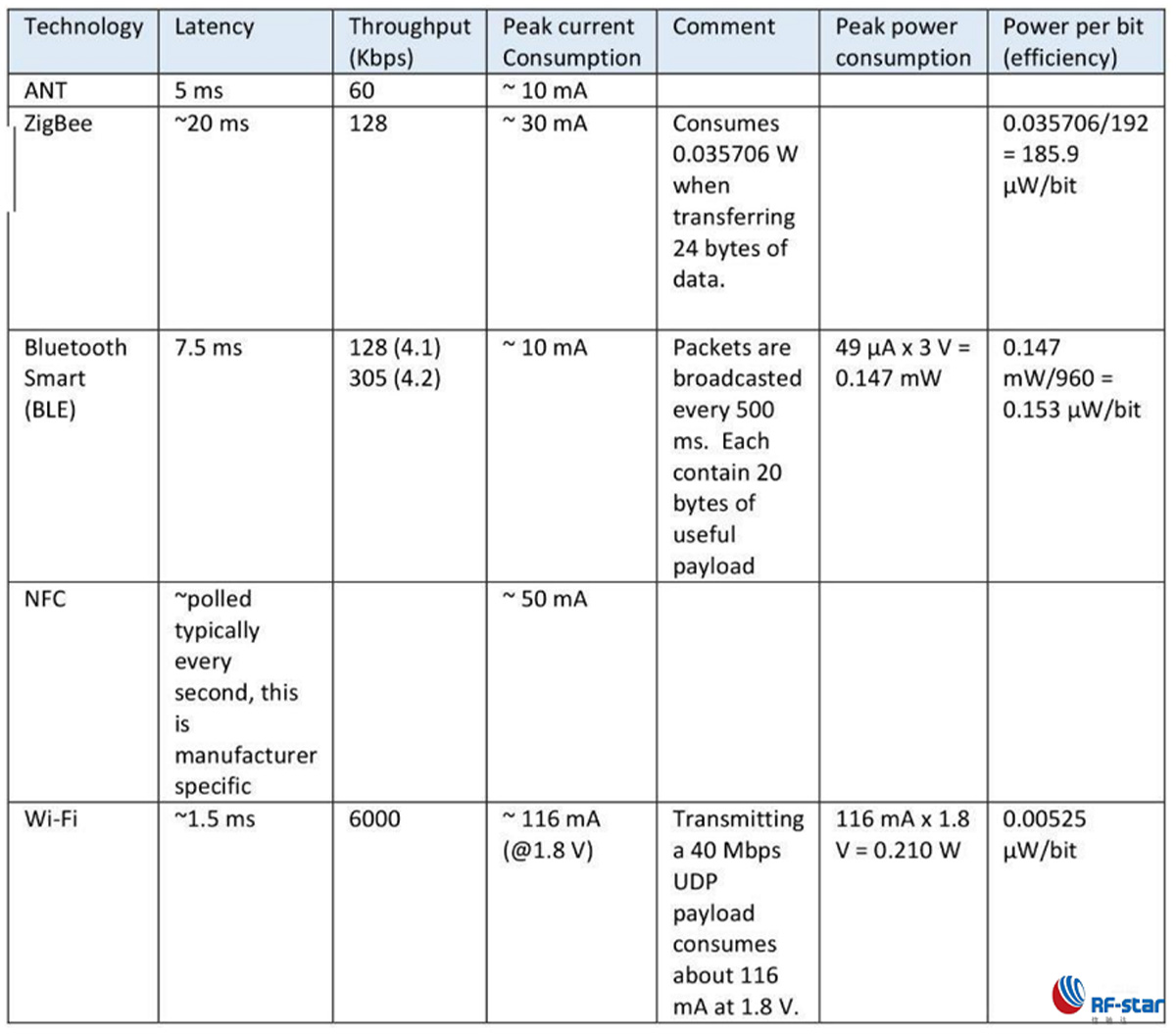
In addition to the specifications, several suggestions for reducing power consumption are provided:
1.Adjust the connection interval, advertising interval and slave delay accordingly.
2.Combine multiple small data packets into fewer large data packets to reduce RF overhead.
3.Consider compressing data locally before transmission to reduce RF throughput.
4.Identify non-critical data that can be sent or not be sent at a slower rate.
Memory Selection

Main indicators of memory: RAM, FLASH, ROM, serial FLASH
RAM: The temporary variables, global variables, arrays, etc. applied in the code are all placed in RAM. The size of RAM will determine the complexity of the system. Early devices such as CC2541 and nRF51822 have fewer RAM resources, which will limit the number of BLE connections as a master, and will also affect the execution efficiency of the algorithm (usually a real-time algorithm will load the code from flash to RAM to run).
Usually need to consider RAM space greater than 20K. (Because RTOS and protocol will also take up some RAM space).
FLASH: The key factor determines the program. Usually Flash requires more than 256K, and the commonly used one is between 256K ~ 512K. Some manufacturers, such as the 1M flash launched by nRF52840, are slightly larger and maybe the products developed for wearable devices.
ROM: You may have the question why is ROM mentioned here? Because the cost of ROM is low, some manufacturers such as Dialog, TI and other manufacturers will put the protocol stack in the ROM to reduce the cost of chip manufacturing. For example, TI's public information is as follows :
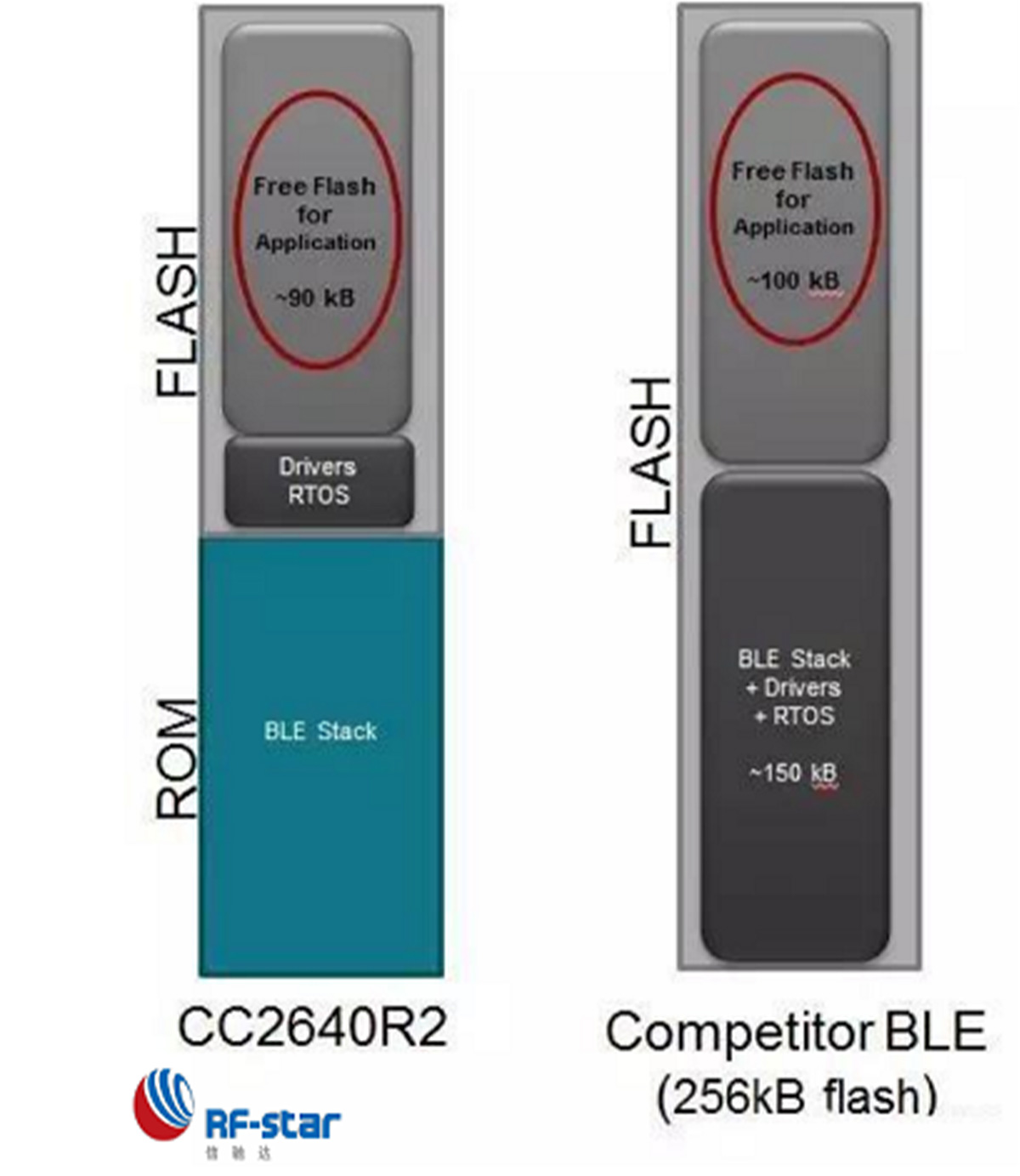
Serial FLASH: This is more interesting. If IoT market managers look at domestic and overseas wireless chips, they can find the interesting point. Overseas semiconductors will integrate flash into the chip. Domestic semiconductors integrate serial flash into the chip or external flash. The reason is all because of the cost! Serial flash is cheap. Using a large-capacity RAM to load the program from the serial flash to the RAM is much lower than the cost of running directly on the on-chip flash. (XCODER has a suggestion here. It is recommended to consider digitally signing and encrypting the firmware stored in the off-chip flash in the chip ROM. Otherwise, it is easy for the pirates to read the firmware from the flash of the customer's product and then copy the product in reverse.)
OTA Upgrade

Os produtos da IoT estão em um período de rápida iteração. Isso não significa que a iteração do produto é rápida, mas que o software é atualizado rapidamente, incluindo bugs, atualização da interface interativa, atualização da lógica de controle, etc. Tudo isso não pode esperar reciclar os produtos e depois desmontá-los. Devemos considerar os requisitos funcionais da atualização sem fio OTA e deixar uma maneira de atualizar nossos produtos.
Veja como controlar a demanda por atualização OTA:
Taxa de ar durante a atualização:
A velocidade determina a experiência do usuário com a atualização. Quanto maior o tempo de transmissão aérea, maior a probabilidade de problemas. Portanto, é o mais difícil usar LoRa para fazer upgrades aéreos.
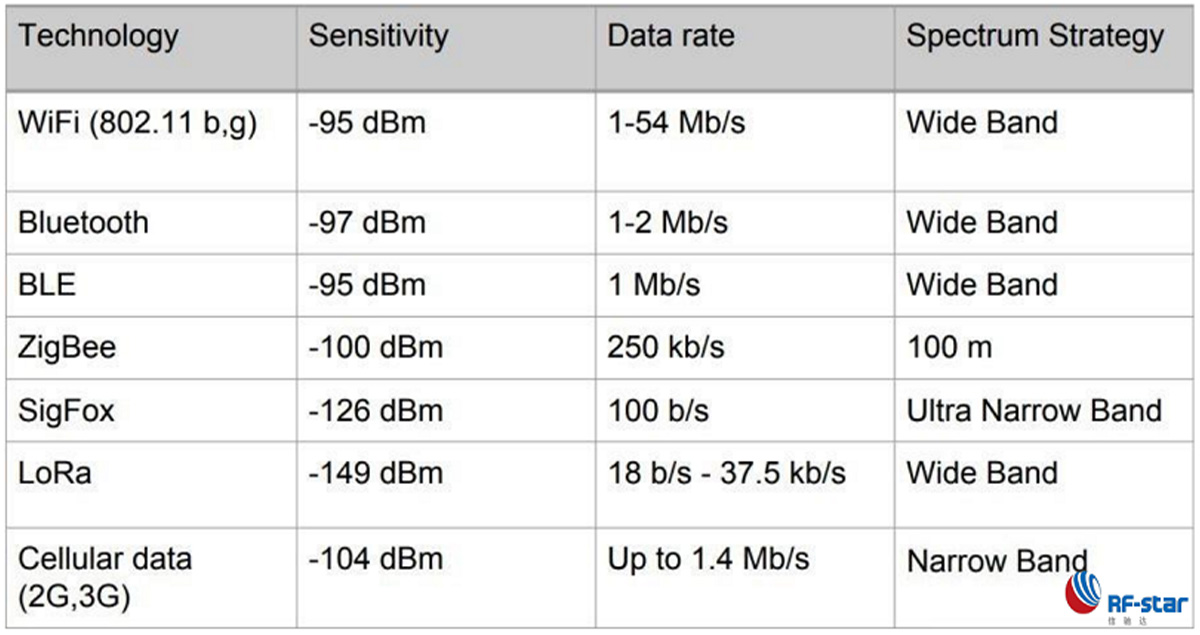
Capacidade de flash de memória:
A atualização sem fio pode ser dividida em dois métodos de atualização. Primeiro, a atualização do backup de imagem requer o dobro do espaço de armazenamento do firmware. O novo arquivo de backup primeiro recebe e armazena no flash, e o programa de inicialização é usado para executar o novo firmware após a reinicialização. Em segundo lugar, não há atualização de imagem. Depois de entrar no modo de atualização, apague diretamente o firmware na memória flash e grave o novo firmware. Este modo de atualização requer que o programa de inicialização suporte a função OTA, o que pode evitar que o produto se transforme em tijolos causados pela falha na atualização.
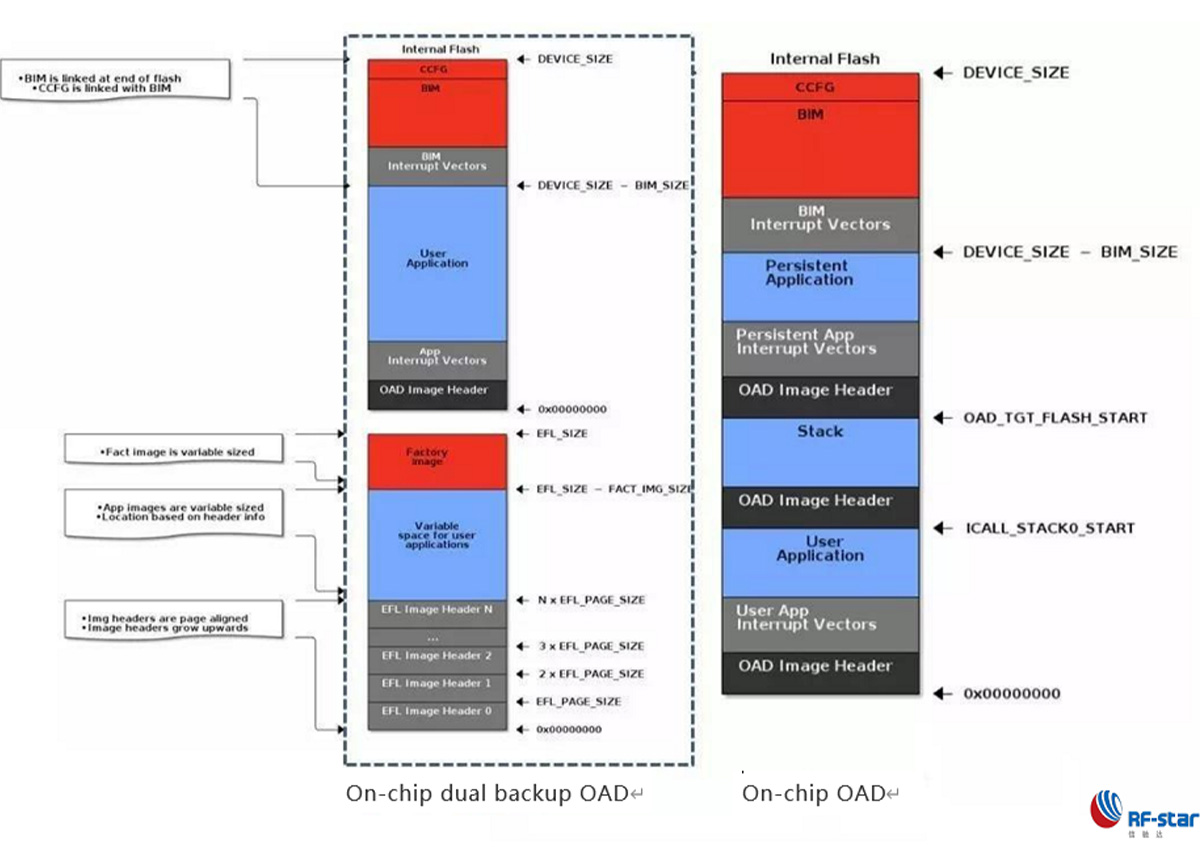
Portanto, a capacidade do flash também é um aspecto que precisa ser avaliado. Não reduza cegamente o custo e reduza o tamanho do flash. Sugere-se que a capacidade do flash seja de 1,5 a 2 vezes o tamanho do flash de sua própria camada de aplicação.

Integração multiprotocolo
Os aplicativos de produto atuais usam Bluetooth e wireless pequeno. Claro, multi-chips podem ser usados para integração. No entanto, já existem fabricantes no mercado que alcançaram a integração multiprotocolo vinculando wafers de diferentes fabricantes originais. Um chip resolve vários protocolos . Eu acho que este é um produto de transição. Devido aos múltiplos wafers internos e múltiplos MCUs rodando ao mesmo tempo, o gerenciamento de energia é um grande desafio.
Atualmente, os fabricantes de semicondutores europeus e americanos já estão implantando a integração multiprotocolo, começando pelo design do chip, combinando 2.4G e wireless pequeno em um único chip SoC e completando as funções multiprotocolo por meio da multiplexação por divisão de tempo de software. Eu acredito que esta é uma tendência no futuro próximo. Pode ser considerado quando são necessários aplicativos colaborativos multiprotocolo. De acordo com o anúncio oficial da Texas Instruments , os chips CC1352 e CC2652 já suportam esta função, e a tecnologia foi aplicada a aplicações de fechaduras inteligentes.
